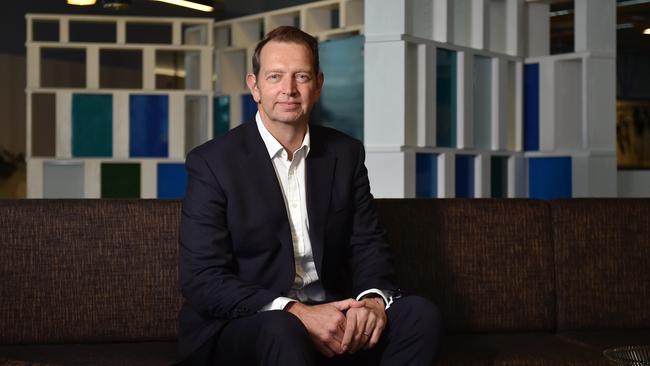Medibank CEO David Koczkar: Interest rate cut won’t remove living cost pain
David Koczkar says many of his customers experienced cost of living pressures this year, and he expects that to continue into 2025, even if there is a rate cut.

Economy
How would you rate the momentum of the Australian economy as we head into 2025? Official forecasts have Australia trimming interest rates from the first half of calendar 2025, is that consistent with your view? What are you seeing around inflation in your own business?
Many of our customers experienced cost of living pressures this year, and we expect that to continue into 2025, even if there is a rate cut. While we weren’t immune to these pressures, our aim is to continue providing our customers with more value and support in their health, keep premium increases as low as we can and managing our own costs effectively. Across the health system we need to think differently and work together to address health costs that continue to outstrip general inflation. We can realise greater productivity benefits through the health transition underway, with investments in personalised care options and technology that give people more choice in how and where they receive the care they need.
Outlook
What excites you heading into 2025? Are you likely to increase, hold steady, or trim your investment spend?
I’m excited about the opportunity to play our role in driving the health transition to keep Australia’s health system one of the best in the world. We are investing in virtual, primary care, and homecare services – sectors that are transforming through technology and that can deliver more choice and value for customers. Another great example is our joint venture, Adeney Private Hospital in Melbourne – a short stay hospital which aims to be the first in Australia to offer no out-of-pocket costs across all its hospital services for private health customers when it opens early 2025.
Reform
As we move into an election year, in your mind, what’s the single biggest lever that can/should be used to lift Australia’s competitiveness or productivity? This could be across any area from labour market, tax reform, training or other areas to encourage investment.
Australia’s health spending reached more than $252bn last year – around 10 per cent of GDP – while health inflation growth is expected to continue exceeding general inflation.
A much-needed health transition is underway in Australia with a shift towards prevention and new ways of caring for patients through virtual, community and home care settings that is improving healthcare access, choice and value. But it needs to go faster. If we don’t, the government will need to spend nearly 50 per cent more on health as a proportion of GDP in 40 years’ time, with hospital spending the fastest growing part. So we need to move from a hospital system to a health system.
Geopolitics
Will a Donald Trump presidency have a potential impact on your business or sector (tariffs or streamlined regulation)? Does geopolitics drive a bigger part of your decision-making?
Australia’s health system is very different to America’s system, so we don’t expect any direct impact to our industry as a result of the change of government in the US. Our government has been very clear that the relationship between the US and Australia remains of great importance and it will continue working constructively with the incoming administration.
People
Has your organisation’s approach to flexible working – including working from home – evolved during the year. Is this likely to change further into 2025?
We believe that work is what you do not where you do it – and our teams are seeing the benefits of flexibility while we have been become more efficient in the way we deliver for our customers. We’re experimenting with different work models – from trialling a four-day work week (now being expanded as a result of its success) to localising retail and health services teams – to deliver greater flexibility and autonomy for our people and support better decision making for our customers. I think the opportunity we all have is to work smarter, to improve performance and at the same time, improve work-life balance and health and wellbeing of our people.
Technology
Where is your organisation along the AI journey – is it in the developmental stage, or are you now using the technology at scale across your business? If so, are benefits matching the promise?
We’re using AI and machine learning at scale across the business, while our use of generative AI is in earlier stages of development. Recently, we launched a new trial with our Amplar Home Health team to help improve wound care for patients. Nurses use their smartphones to take a photo which is then analysed to determine tissue types and measure wounds using advanced AI technology to help them better assess and treat chronic wounds. Currently the team manages almost 100,000 patient wound care visits each year, so this trial has enormous potential. We’ve also developed a comprehensive policy to ensure we approach the use of AI ethically and with security and privacy protections in place.



To join the conversation, please log in. Don't have an account? Register
Join the conversation, you are commenting as Logout